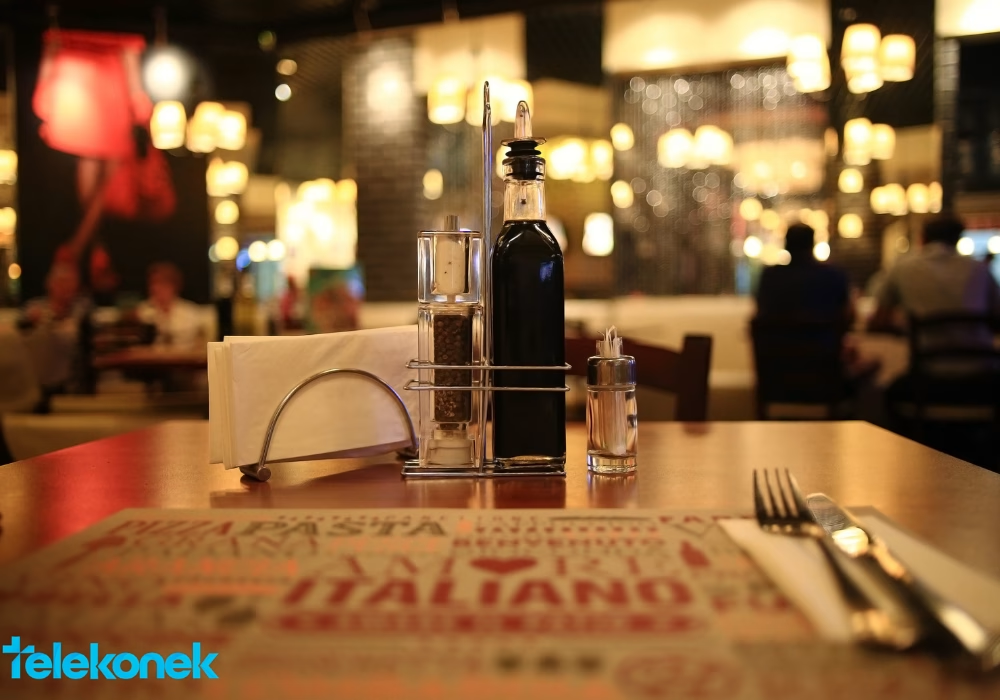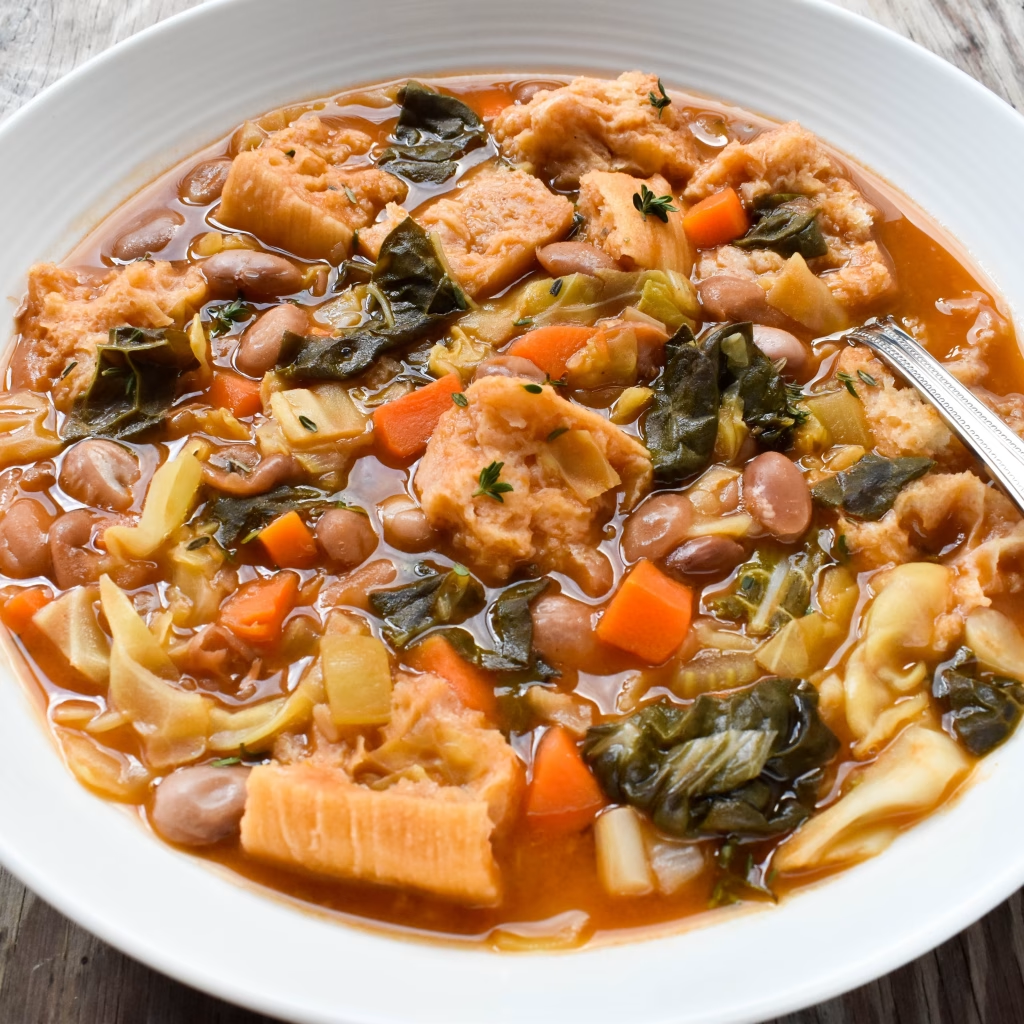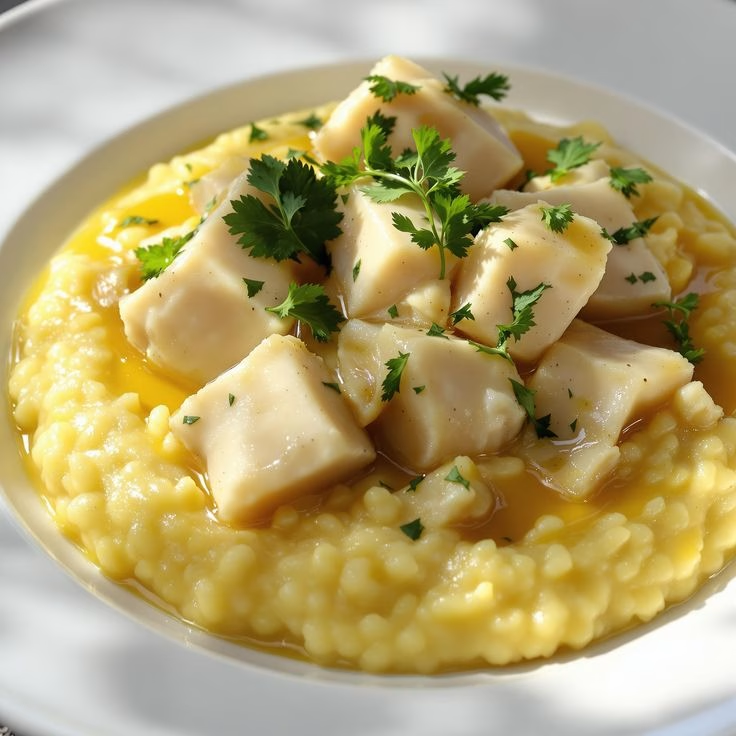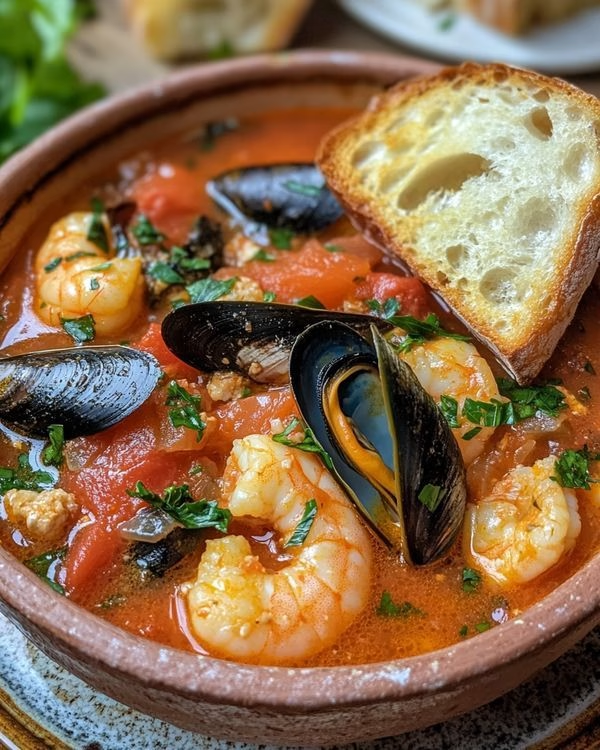Top 5 Foods to Try in Italy (That Aren’t Pizza)

Italy’s culinary fame usually starts and ends with pizza and pasta. But if that’s all you eat, you’re missing out on the real story — the regional, lesser-known dishes that locals actually crave. From the fried street food of Sicily to the seafood stews of the Tuscan coast, there’s a rich food culture waiting to be explored.
But here’s the thing: many of these hidden gems aren’t in your guidebook. You’ll need Google Maps, local blogs, and real-time reviews — and that means staying connected. If you don’t want to deal with local SIM cards or unreliable Wi-Fi, grab a travel eSIM before your trip. It’s the simplest way to stay online without the stress.
Now, let’s dive into five must-try Italian dishes that go far beyond pizza.
1. Arancini (Sicily’s Golden Street Food Legacy)

Walk through the back alleys of Palermo at noon and the scent hits you before the sight does — something crispy, cheesy, meaty, and unmistakably fried. That’s arancini: golden, deep-fried balls of saffron rice, stuffed with savory fillings and served piping hot in wax paper. It’s not just a snack; it’s a piece of Sicilian history you can eat with one hand.
A Thousand Years in the Making
Arancini trace their origins to 10th-century Arab rule in Sicily, when rice, saffron, and slow-cooked meat were staples of the upper class. Over time, locals adapted the idea of a portable, rice-based meal into what became the arancino (or arancina, depending on where you are — even the name is debated fiercely between east and west Sicily). Today, it’s one of the most iconic street foods on the island.
The classic arancini is filled with:
- Ragù (a hearty meat and tomato sauce),
- Peas, for a hint of sweetness,
- Mozzarella or caciocavallo, a local cheese that melts into gooey perfection,
- All rolled in breadcrumbs and fried until crisp.
In eastern Sicily, the cone-shaped arancino pays homage to Mount Etna’s silhouette. In Palermo and western Sicily, the round arancina is preferred. It’s a culinary civil war — and both sides claim theirs is superior.
Fun fact: November 13 is Arancini Day, coinciding with the feast of Saint Lucia, when bread and pasta are traditionally avoided, and rice becomes the star.
Regional Variations You’ll Want to Hunt Down
If you’re traveling across Sicily, look beyond the classic ragù:
- Burro: A white version with béchamel, ham, and mozzarella — rich and creamy.
- Norma: Eggplant, tomato, and ricotta salata — a vegetarian tribute to Catania’s favorite pasta dish.
- Pistachio: In Bronte, the pistachio capital of Europe, arancini filled with pesto di pistacchio are a must.
These aren’t fast food — they’re handmade, regional expressions of Sicily’s diverse agricultural roots. Every town has a slightly different take.
Where to Try It
The best arancini are often found in unassuming places — street carts, hole-in-the-wall bakeries, even train station snack counters. But here are a few legends:
- Savia (Catania): Across from Bellini Gardens, serving cone-shaped arancini with crunchy shells and oozing cheese.
- Ke Palle (Palermo): Modern takes with dozens of fillings — think carbonara or squid ink.
- Bar Touring (Palermo): Home of the legendary arancina bomba — the size of a grapefruit and fried to perfection.
You’ll often pay €1.50–€3 for one, making it one of Italy’s best value-for-money eats.
eSIM Travel Tip: How Mobile Data Helps
Arancini hot spots often don’t show up in English-language guides or Tripadvisor. Locals share their favorite spots on Google Maps, TikTok, and Instagram — and those places are gold. With a travel eSIM, you can:
- Find highly rated spots with local reviews
- Translate menus and food labels using Google Lens
- Pin locations as you wander through local markets (many don’t even have websites)
Pro tip: Search “arancina artigianale + city name” while walking around — your eSIM data will bring you straight to the real deal.
2. Ribollita (Tuscany’s Humble Soup with a Noble Heart)

If you find yourself wandering into a Florentine trattoria on a cold November evening, you might notice locals huddled over bowls of something thick, steaming, and beige-brown. It’s not glamorous, but it’s comforting beyond words. That’s ribollita — a dish born from hardship, now celebrated as a Tuscan culinary treasure.
A Peasant Dish with Deep Roots
The name “ribollita” literally means “reboiled”, referring to the way this soup is traditionally prepared: made one day, then reheated and reboiled the next, thickening and intensifying the flavor. Originally a way for peasants to stretch leftovers, it’s now considered a prime example of Tuscany’s cucina povera — the “poor kitchen” philosophy of making something delicious from next to nothing.
The key ingredients include:
- Day-old Tuscan bread (saltless, crusty)
- Cannellini beans, stewed for creaminess
- Cavolo nero (Tuscan black kale)
- Carrots, celery, onion, and often a bit of tomato
The texture is more stew than soup — chunky, hearty, almost chewable. The bread dissolves into the broth, turning every bite into a savory, earthy spoonful of history.
Did you know? The dish likely originated in medieval times, when servants would take vegetable scraps and soak them in leftover bread and broth from noble banquets.
More Than Just a Winter Dish
While ribollita is traditionally a cold-weather comfort food, many trattorias now serve it year-round thanks to rising demand from visitors eager to try something “truly local.” Still, if you want it at its best — with kale in season and the air crisp — visit between October and February.
Some chefs add a final drizzle of peppery Tuscan olive oil or even a grating of aged pecorino before serving. Others remain purists — no cheese, no flair, just slow food at its finest.
Where to Try It
Florence and the surrounding Tuscan countryside are where ribollita truly shines. Look for traditional trattorie, osterie, and even farm-to-table agriturismos.
- Trattoria Cammillo (Florence): Beloved by locals and chefs alike, known for rustic ribollita done the traditional way.
- Osteria Vini e Vecchi Sapori (Florence): Family-run with no website — but always a waitlist.
- Agriturismo La Poggiolina (Chianti area): Offers seasonal ribollita as part of multi-course farmhouse meals.
Pro tip: Some places only serve ribollita on certain days of the week, sticking to old customs. Having mobile data lets you call ahead or check online schedules.
eSIM Travel Tip: Bread Soup + Data = Smart Move
The best ribollita isn’t found on Yelp — it’s passed around in Italian-only reviews, local Facebook groups, and Google Maps entries that rarely appear for English queries. Having constant data via an eSIM means you can:
- Translate menus in real time using Google Lens
- Find authentic spots without relying on English-language guides
- Use reservation apps like TheFork, especially in Florence where tables book out fast
And if you’re road-tripping across Tuscany? Good luck finding decent Wi-Fi between medieval towns. Your eSIM will keep you online — even on the Via Chiantigiana between villages.
3. Baccalà alla Vicentina (The Slow-Cooked Soul of Veneto)

In Vicenza, baccalà isn’t just dinner — it’s a symbol of regional pride, a dish woven into the city’s very identity. Every family has a story about it, every trattoria a secret recipe. And despite its humble ingredients, baccalà alla Vicentina holds a revered place in Italy’s culinary canon.
From Arctic Shipwreck to Venetian Plate
The story of baccalà begins not in Italy, but in the icy waters of Norway, where, in 1432, Venetian merchant Pietro Querini was shipwrecked on the Lofoten Islands. There, he encountered the locals’ method of preserving fish: air-dried cod, known as stockfish. He brought it back to Venice, where it eventually became a staple for the inland regions — especially Vicenza, which transformed it into something extraordinary.
Unlike southern Italy’s spicy tomato-based baccalà dishes, the Vicentina version is slow-cooked in milk, olive oil, onions, and anchovies for hours — sometimes up to 6 hours — without stirring, to avoid breaking the delicate fish. The result? A creamy, savory, aromatic dish served over soft white polenta, with every bite melting into the next.
Fun fact: Despite the name, “baccalà” in Vicenza actually refers to stockfish, not salted cod. The confusion is just part of the charm.
A Sacred Culinary Ritual
The process is painstaking. The stockfish must be soaked in cold water for 2 to 3 days, changing the water frequently to rehydrate and soften it. Only then is it ready for cooking — a level of commitment that speaks to the dish’s cultural weight.
To protect this heritage, Vicenza established the Confraternita del Baccalà alla Vicentina, a formal brotherhood dedicated to preserving the traditional recipe. Restaurants bearing their seal guarantee authenticity.
“No garlic. No tomatoes. No shortcuts.” — a common mantra among Vicenza’s baccalà purists.
Where to Try It
You won’t find this dish casually outside of Veneto, and certainly not prepared the way locals expect. For the real experience, go straight to the source:
- Trattoria al Pestello (Vicenza): One of the oldest baccalà institutions in town, rustic and revered.
- Ristorante Il Ceppo (Vicenza): A deli and eatery famous for takeaway baccalà and modern interpretations.
- Antica Osteria Al Bersagliere (Sandrigo): Located near the town where the official Baccalà Festival (Festa del Baccalà) is held every September.
Expect to pay €14–€20 for a portion with polenta — worth every euro for the labor behind it.
eSIM Travel Tip: Unlock the Local Layer
Vicenza isn’t overflowing with English-speaking tourists, which is part of its charm — but it also means finding information online can be tricky. With an active eSIM and mobile data, you can:
- Translate local blog posts or restaurant reviews
- Check for the Confraternita certification in Google Maps listings
- Navigate to tucked-away eateries that don’t show up in major apps
Bonus: During the Baccalà Festival, small pop-up kitchens serve dozens of baccalà variations. You’ll need real-time updates and maps to catch them all.
4. Cacciucco (Livorno’s Fiery Fisherman’s Stew)

In Livorno, the sea doesn’t just touch the coastline — it fills the kitchen. And no dish captures that better than cacciucco, a robust, fiery seafood stew that tastes like the ocean punched you in the mouth and then hugged you after. It’s messy, bold, and unapologetically rustic — just like the port city it comes from.
A Dish for the Poor, a Ritual for the City
Cacciucco (pronounced ka-CHOO-ko) is a dish born from necessity and improvisation. It was created by Livornese fishermen who couldn’t sell the day’s less desirable catch — scraps of eel, squid, cuttlefish, and other bottom-feeders. Rather than waste them, they’d simmer everything together with tomatoes, garlic, pepperoncino, and red wine, creating a meal that warmed the bones after a long day at sea.
Traditionalists say a proper cacciucco must include five types of seafood — one for each ‘C’ in the name. The broth is spicy and deeply oceanic, best soaked up with thick, toasted bread rubbed with garlic and drowned in the stew.
Legend has it that even Dante wrote about an early version of this dish — although, in classic Tuscan fashion, no two locals agree on the details.
Not Your Average Seafood Soup
Cacciucco isn’t refined or subtle. It’s loud, smoky, and often served in deep clay bowls that stain with every spoonful. The base is thick and dark from hours of slow cooking, and the seafood is left whole — shells, tentacles, bones and all. You eat it with your hands, your bread, and a napkin over your shirt.
Some variations use octopus and squid only, while others throw in scorpion fish, mussels, and even crab. And don’t be surprised if the broth leaves a mild burn on your lips — that’s the pepperoncino working its magic.
Where to Try It
While some Tuscan cities claim their own versions, Livorno is still the cacciucco capital. Here’s where locals go:
- Trattoria da Galileo (Livorno): No-frills, always packed with locals — their cacciucco is legendary and served only a few days a week.
- Osteria la Barrocciaia (Mercato Centrale): A chaotic, old-school spot where the stew tastes like home.
- Ristorante Le Volte (near the port): Offers a slightly refined take, with excellent wine pairings.
Expect a price tag of €18–€25, and don’t wear white.
eSIM Travel Tip: Stay Connected Between Ports
Livorno’s best cacciucco spots are often hidden in side streets, open only on certain days, and rarely listed on international platforms like Yelp. With mobile data from an eSIM, you can:
- Find Google Maps reviews in Italian and translate them instantly
- Check opening hours, which frequently shift based on season or catch
- Follow local food bloggers or geo-tagged TikTok reels showing exactly where the stew is worth your time
Bonus: Some restaurants serve cacciucco only on Fridays, in keeping with Catholic no-meat traditions. You’ll need real-time info to plan around that.
5. Gelato (But Not the Tourist Kind)
There’s gelato… and then there’s real gelato — the kind that melts a little too quickly, tastes like actual fruit or toasted nuts, and isn’t piled in technicolor swirls for Instagram. If you’ve only had gelato from a street vendor next to the Trevi Fountain, you haven’t had it yet.
Not All Gelato Is Created Equal
True Italian gelato is a labor of love. It contains less air (overrun) than ice cream, giving it a dense, silky texture that sits heavier on the spoon and more intensely on the tongue. It also uses more milk than cream, resulting in a smoother, milkier base that lets ingredients shine — especially in fruit and nut flavors.
But the tourist version? It’s everywhere. You’ll recognize it by:
- Neon-bright colors (especially banana, pistachio, or mint)
- Puffy, gravity-defying swirls towering above the tubs
- Uniform flavors that taste sugary rather than specific
That gelato is often made with pre-mixed industrial powders, not fresh ingredients.
Pro tip: Pistachio should be a muted sage green, not neon. Banana should be pale cream, not Minion yellow.
How to Spot the Real Deal
Look for the words “artigianale” or “fatto in casa” (artisanally made, or homemade). These shops often keep gelato in covered stainless steel tubs (called carapine), with flavors written on simple paper cards — not plastic signs with cartoon cherries.
Real gelaterie often focus on seasonal ingredients. Expect melon or fig in summer, chestnut or pear in winter. If the menu never changes year-round, that’s a red flag.
Another insider clue: If you see “Zabaione” (a custard flavor made with Marsala wine) or “Crema Fiorentina,” you’re in good hands.
Where to Try It

The best gelato isn’t always in the biggest cities. But even in tourist hotspots, there are sanctuaries of authenticity:
- Florence:
- Gelateria dei Neri: Known for bold, natural flavors like ricotta & fig.
- Vivoli: One of the oldest gelaterie in Italy — uses traditional machines, still run by the same family.
- Rome:
- Gelateria del Teatro: Uses fresh herbs and fruits — try lavender-white peach or rosemary-honey-lemon.
- Fatamorgana: Pioneers in gourmet flavor experimentation — avocado-lime, chocolate-lapsang, and more.
- Bologna:
- Cremeria Scirocco: Locals line up for the pistachio and dark chocolate with chili.
A scoop usually costs €2.50–€3.50, and you’ll always regret not getting two.
eSIM Travel Tip: Let Taste Lead You
The best gelato is often discovered serendipitously — through a friend’s Instagram reel, a tagged foodie location on TikTok, or a Google Maps rabbit hole. Having a reliable eSIM lets you:
- Search for “gelato artigianale + city name” in real time
- Filter Google results by rating and local language
- Navigate winding alleys when GPS is unreliable over public Wi-Fi
- Translate Italian-only menus and flavor descriptions on the spot
Bonus hack: Follow hashtags like #gelatodavivere or #gelatoartigianale on Instagram. Many of the best spots only have a small local following — but they’re worth the detour.
Why Mobile Data Is a Food Traveler’s Secret Weapon
In Italy, the best meals aren’t found in guidebooks — they’re shared in whispers, tagged in stories, and hidden in alleys with no signs. To chase them, you need to be connected in the moment. That’s where mobile data through an eSIM becomes your most valuable travel companion.
Here’s how mobile data fuels your food discoveries:
💬 WhatsApp or Instagram DMs: Contact family-run restaurants directly to ask if they’re open, taking bookings, or serving ribollita tonight.
🔍 Google Maps: Zero in on those unmarked trattorias with rave reviews from locals — the ones that don’t even have websites.
📷 Google Lens + Translate: Instantly decode handwritten menus or chalkboard specials in Italian, so you know what you’re ordering before you bite.
📱 TheFork / Quandoo: Grab last-minute reservations at packed osterias without walking door to door in the heat (or rain).
📸 Instagram + TikTok: Track down that off-menu pistachio tiramisu you saw in a foodie reel — complete with location tags and video proof.
Final Thoughts
Italy is more than pizza — it’s an edible tapestry woven from centuries of local pride, regional ingredients, and daily rituals. Whether you’re chasing arancini down a Sicilian alley or spooning ribollita in a hilltop Tuscan village, every bite tells a story.
And with the right mobile data in your pocket, you never miss the next chapter.
👉 Get your Italy eSIM from Telekonek today — and travel with a taste for adventure (and no roaming fees).


